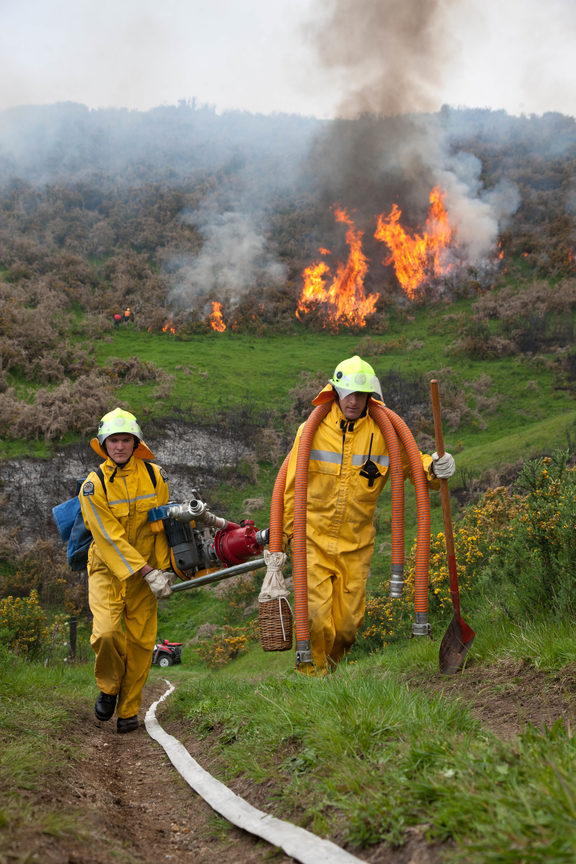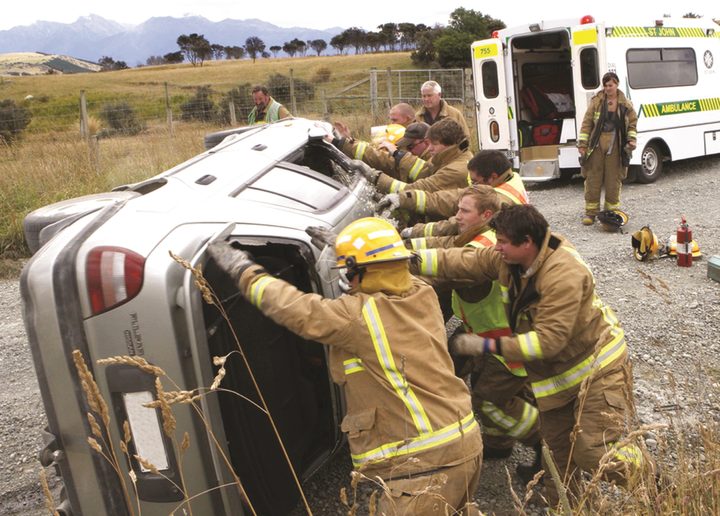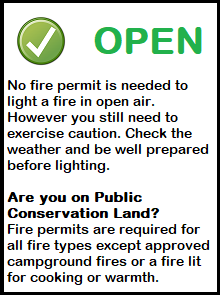It’s the beginning of a new era for firefighters around the country, with the establishment of Fire and Emergency New Zealand (FENZ).

From 1 July 2017, Fire and Emergency New Zealand is replacing the New Zealand Fire Service. Photo: Supplied / Fire and Emergency New Zealand
The new organisation will merge the country’s 40 rural, urban, career and volunteer fire services, and bring together over 14,000 staff, including 11,300 volunteers and 2800 career firefighters and support staff.

Rural firefighters in action Photo: Supplied / Fire and Emergency New Zealand
Tomorrow marks day one of the organisation, as the Fire and Emergency New Zealand Act comes into effect, replacing the 40-year-old Fire Services Act.
FENZ national commander of urban fire and emergency Paul McGill said the changes meant their work responding to emergencies such as car crashes, medical calls, and weather events would be legally mandated.
He said firefighters around the country now attended more medical emergencies and car crashes than burning buildings and scrub fires.
“We’re really excited about [the changes]. We think it’s really time to bring all the services together so Saturday’s a big day for us, it will give us the mandate we need to take on all the non-fire work we’ve been doing for quite a while and will help to improve the service significantly.”
“The legislation we have been operating under is over 40 years old and doesn’t recognise all the non-fire work that firefighters doing today, so this brings that up to date.”
He said the new organisation could also provide a more coordinated response and better support for volunteers.
“With over 40 services now, they do differ in the resourcing they have, and the training they get, so we will be able to bring all that together to provide consistent service right around the country.”
But Professional Firefighters Union secretary Derek Best said he was worried there might still be a divide between rural and urban firefighters, and that could spark confusion around who would be in charge when firefighters attended a callout.
“We still have the artificial barrier between urban and rural, and that seems to be going to continue for a little while, but that’s what causes the problem – like in Wellington, the Mount Victoria area is classified as rural, which is a nonsense in terms of who is available to respond to any incidents that happen there.”
But Richard McNamara, the principal rural fire officer for Marlborough, disagreed, saying that wouldn’t get in the way of them doing their job.
“How we interact with each other comes down to command and control, and there are some very clear guidelines put out by FENZ about how that’s going to operate.
“Provided we stick to the game plan and are prepared to talk to each other, then it will go well.”
The new organisation will be funded in the same way as the Fire Service, mainly from levies paid on property, contents and car insurance.
The restructure is expected to cost about $300 million.

Firefighters respond to a car crash in the 2000s: The new arrangement will do a better job of recognising the non-fire work that firefighters do, FENZ says. Photo: Supplied / Fire and Emergency New Zealand
,


 CHECK ITS ALRIGHT
CHECK ITS ALRIGHT